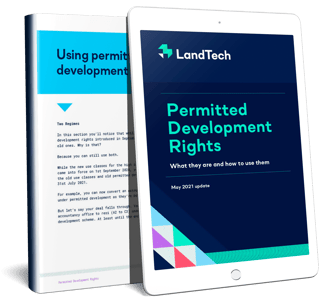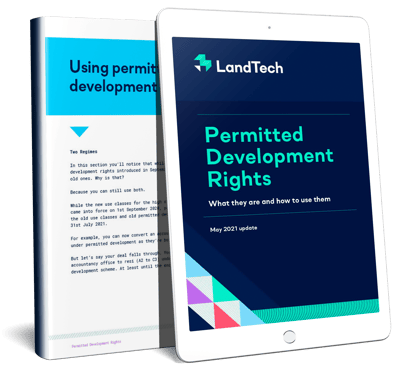What are permitted development rights?
Permitted development rights are a series of rules governing certain types of expansions and conversions within the property industry.
From a technical side, the rights came from the Town and Country Planning (General Permitted Development) (England) Order 2015 (or “the GPDO”). And as it came from Parliament, it generally supersedes local planning policy (but more on that in a bit).
Want a complete overview of Permitted Development Rights? Check out our Guide
How permitted development rights work
The aim was to simplify the planning process by giving pre-approval to the types of projects that come up more frequently. This essentially gave homeowners and developers the right to complete specific types of work without the need to submit a full planning application.
Permitted development rights give these projects the status of ‘prior approval’ – so they can essentially be rubber-stamped through planning.
Crucially though, an application still needs to be made. And, while likely to go through, it is by no means guaranteed.
There are certain restrictions, at both the national and local level, that can affect permitted development rights. These include restrictions around the size and shape of a property, the type (e.g. detached vs terraced), and location (such as restrictions around conservation areas, areas of outstanding natural beauty etc.)
And of course all plans still need to meet building regulations – so it’s not a get-out clause to do shoddy work.
But one key exemption to be aware of is Article 4.
What is Article 4 exemption?
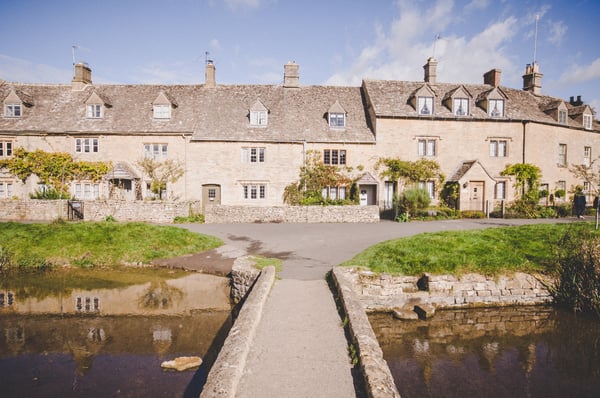
Local authorities can designate areas where permitted development rights are restricted under Article 4 of the legislation.
This might be to protect the character of an area (for historical importance, for instance), or to keep existing uses (such as maintaining an employment area). However, some local authorities use it as a way to enforce a blanket ban on the rights.
Make sure you’re aware of any restrictions in your area before you commit to a project.
Common types of permitted development projects
There are many ways to use permitted development rights, but some of the big ones are:
1) Household rights
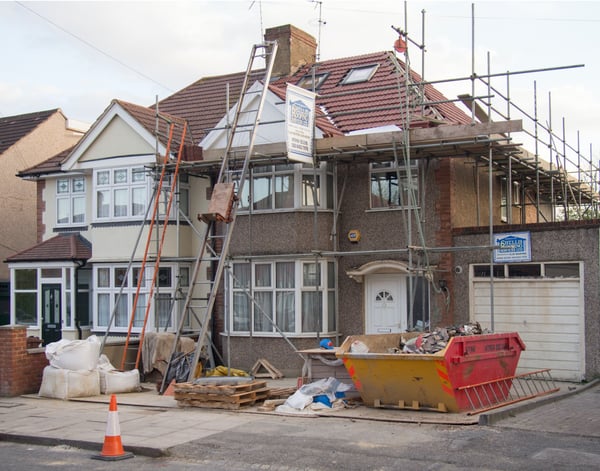
There are quite a few improvements that can be made to a house, including:
- Internal remodelling
- Converting a garage
- Loft conversions
- One- or two-storey extensions
You can get a complete list (along with some more information on the restrictions) by downloading our free guide.
2) Use class E conversions
In September 2020, a new use class came into effect – use class E.
Essentially acting as the ‘use class of the high street’, this was designed to make it easier to convert between common uses for high street buildings, such as turning financial and professional services properties into cafes or restaurants.
Interestingly, it also made it much easier to achieve multi-use, such as having a shop by day, and a yoga studio by night.
Then, on 31st March 2021, the government announced another big change – that these properties could soon be converted into resi.
3) Agricultural building
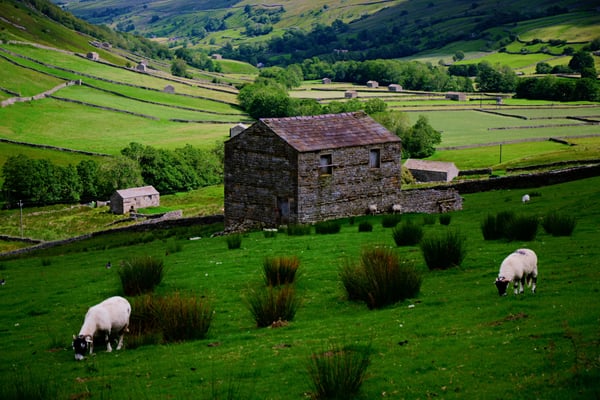
Agricultural buildings are a prime source of opportunities. Many are underused, and some are empty and abandoned entirely, so you could unlock a lot of value (for you and the landowner).
There are two plays you can make – converting to residential, or converting to a commercial use.
While residential is usually best for value, there are times when other uses can be not only simpler (and cheaper) to achieve, but actually more profitable in the long run too – as we looked into in this blog post.
Want to know more about permitted development rights? Download the eBook.
Permitted development rights are a complex, controversial topic, and there’s far more detail than we can go into here.
So, to help, we’ve put together a detailed guide to permitted development rights.
In the guide, you’ll get:
- Detailed charts of what’s allowed under permitted development
- New and upcoming opportunities from changes
- How to find and evaluate suitable sites with ease

